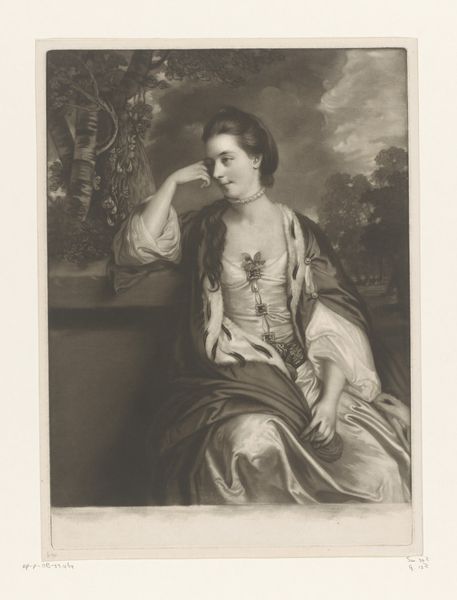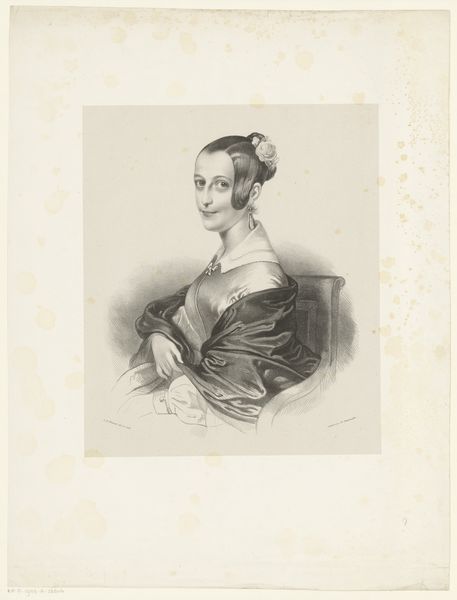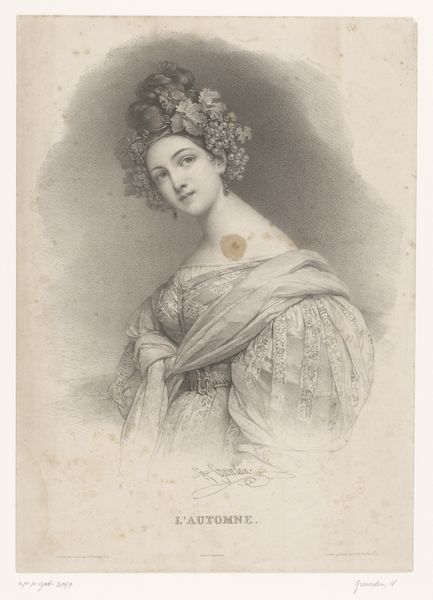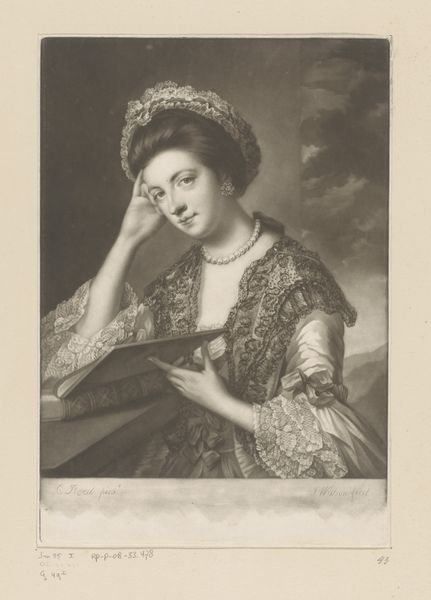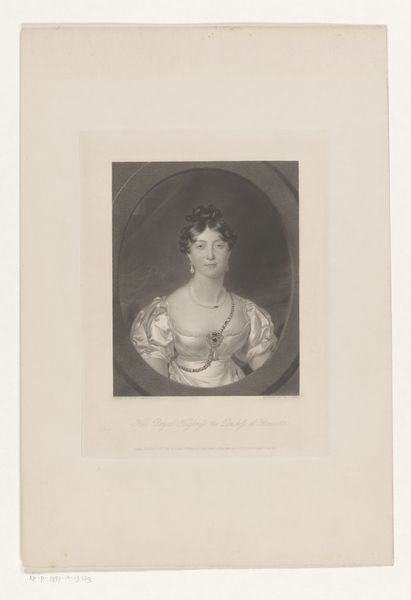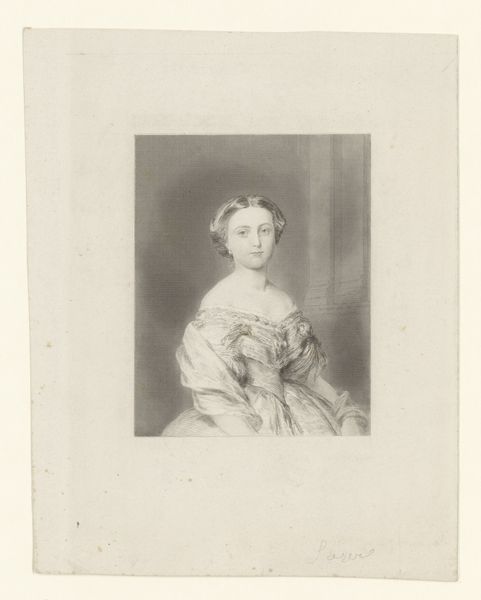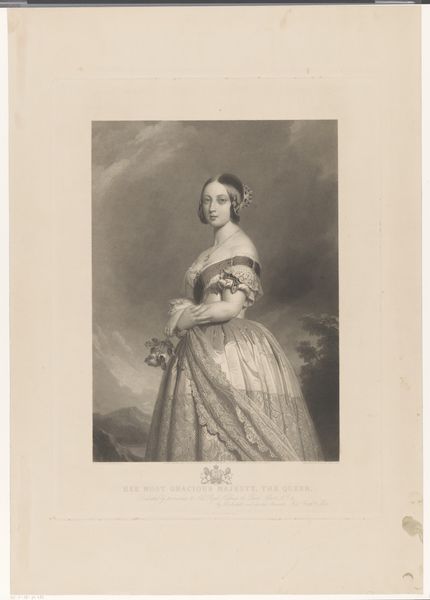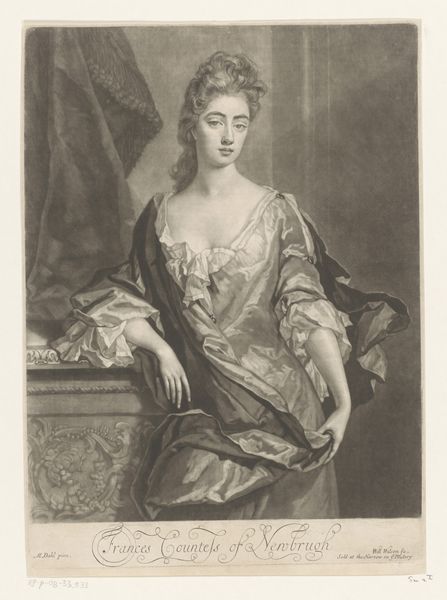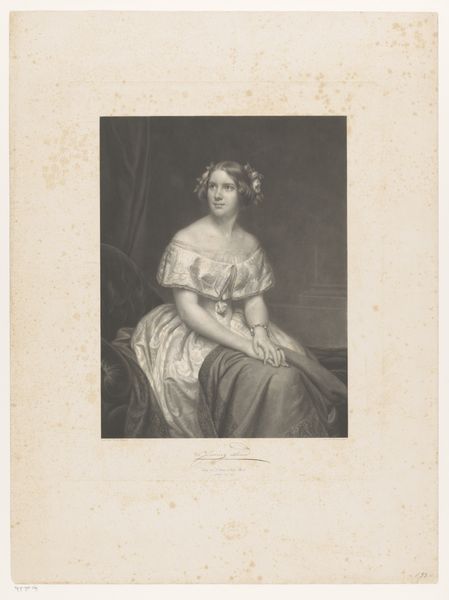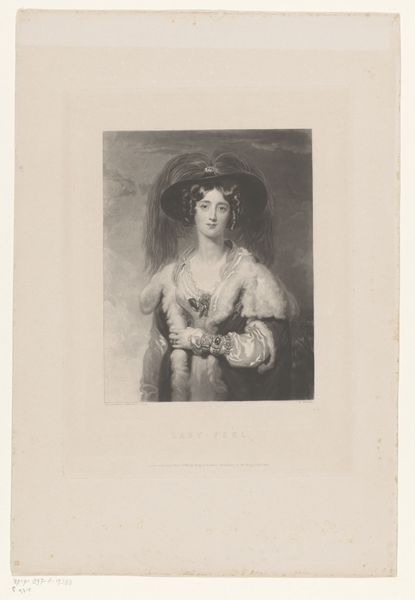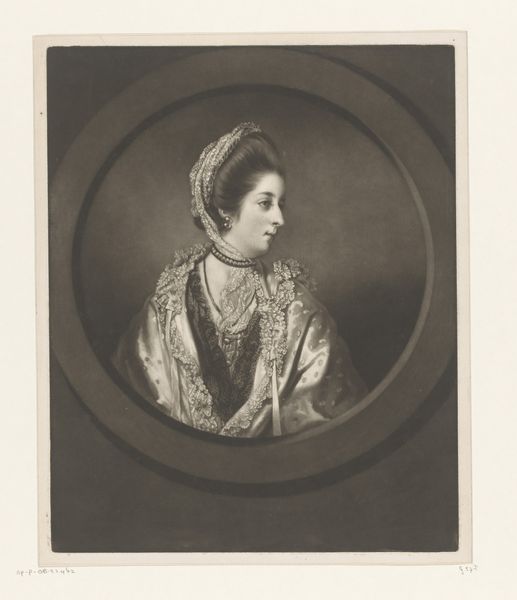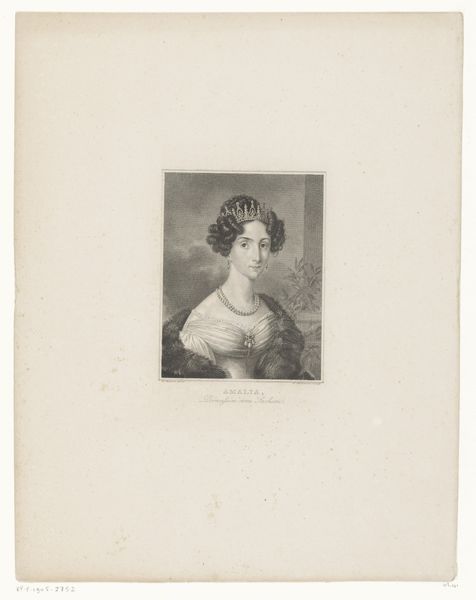
print, engraving
#
portrait
#
pencil drawn
#
light pencil work
#
baroque
# print
#
pencil sketch
#
old engraving style
#
pencil drawing
#
pencil work
#
engraving
Dimensions: height 326 mm, width 226 mm
Copyright: Rijks Museum: Open Domain
Curator: This engraving, rendered by John Faber the Younger in 1748, is a portrait of Mary Lilias Scott. The print showcases delicate lines and tonal contrasts. Editor: Immediately, I see an embodiment of poised constraint—that oval frame seems to compress her energy, even as she holds what seems to be a musical score. There's a tension between societal expectation and perhaps a personal, creative outlet. Curator: Absolutely. Scott belonged to the circles of fashionable society, but let's unpack this "poised constraint" further. How might her identity as a woman during the Baroque period have dictated the imagery? Editor: I'm drawn to the details, for instance, the symbolic weight carried by flowers, the ornament in her hair and at her chest – a deliberate, controlled expression, typical for women portrayed at the time, and a testament to wealth. It’s like a carefully curated performance of femininity. She’s also holding what I would consider to be love letters! Curator: Precisely. Considering art history and gender, portraits of women were deeply entangled with displaying virtue, lineage, and marriageability. Faber positions her within those expectations but possibly with subversive intentions. Editor: See how the softness of her features and her gaze carry that feeling of intimacy! Note also the subtle baroque detailing around her family’s coat-of-arms. She would not want to compromise the expectation put on women at that time. The musical notes point toward some sort of refinement or cultured attributes, and that has always been the purpose of these sorts of works. Curator: We see her then as both a product of her time and as a person negotiating its strictures. What appears initially as passive reception could also signal active, albeit constrained, participation within her social milieu. Editor: And seeing how her presence extends through these surviving artistic impressions and visual relics is just fascinating to think about in a psychological manner. Curator: It urges us to consider the nuances embedded in representations of women throughout history and also to question how much those conventions impact the perception of women to date. Editor: An excellent demonstration of how an image is very rarely ever just *of* something, but carries much meaning through symbolic associations that can resonate even today.
Comments
No comments
Be the first to comment and join the conversation on the ultimate creative platform.
